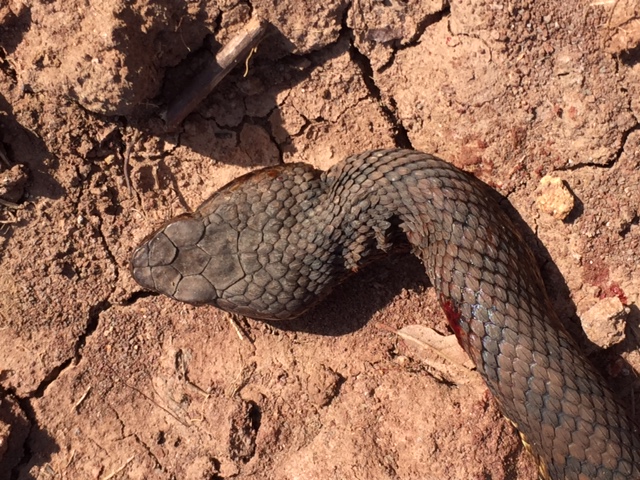
A recent article in “Field And Stream” mentioned that “From the first of June to the end of August, you have 92 days to fish, hunt, camp, and have the time of your life,” so let’s get started! So much to do and so little time. Great advice and with that in mind this week might be a good time to take a look at the “DOWNSIDE TO BEING OUTSIDE”! Sounds funny doesn’t it, since we discuss ways to get out and enjoy our great Oklahoma outdoors every week. But there are some concerns and issues we need to be aware of, especially when we are accompanied by our little hunters or fishermen.
Most of these affect us more this time of year, by far, than they do in late fall and winter. During those times the main issues are exposure and possibly frostbite.
It doesn’t matter if you’re hunting, fishing, hiking, biking, boating, camping or anything outdoors, you need to take precautions and be aware of your surroundings.
Many years ago, my brothers and I had the pleasure of deer hunting the ridges and canyons of the Fort Stockton area in south Texas as the guests of Joe Parker Sr and his sons, Joe Jr and Jim Parker. To say it was quite a hunt was an understatement! It was said that in that area “everything bites, sticks or scratches”. You have no idea how true that was. While not that severe in southern Oklahoma we can’t overlook the issues we have.
Probably the most common problems come from the insects right outside our door. First would probably be mosquitos; not only are they annoying, but now with the issues of West Nile and Zika virus they become more of a health hazard. Blackflies or Buffalo Gnats are very troublesome also, while they do not pose as big of a threat. Ticks are also a big concern as Lyme Disease can be very serious, if gone undetected.
Chiggers may not be serious but tell that to someone who spent the afternoon sitting in the grass fishing at their favorite pond!
Fire ants are a problem that were not present when I grew up but they are now; thank Texas for those! They, along with wasps and bees, can be a real problem especially for younger outdoorsmen. They pose the problem of anaphylactic shock in youngsters with some allergies.
The good thing is that a quality insect repellent with “Deet” will ward off most of the pests, if applied properly.
One of the most annoying things is poison ivy. While it doesn’t attack, if you get a good dose of it, you surely may feel like it has. While it is the most common, we must include poison oak and poison sumac in this group. Whether you’re just gardening without gloves, taking a walk through the woods or building fence, you need to be aware what it looks like and avoid it! Remember “leaves of three, let it be”! Also if working or playing in an area with poison ivy, wash your clothes thoroughly as the oil from the plant may remain on them.

The sap of the poison ivy plant contains an oil called urushiol. This is the irritant that causes an allergic reaction. You don’t even have to come in direct contact with the plant to have a reaction. The oil can be lingering on your gardening equipment, golf clubs, or even your shoes. Brushing against the plant, or anything that has come in contact with it, can result in skin irritation.
Last, but certainly not least, are the venomous snakes of our area. We have a variety of rattlesnakes, copperheads and the cottonmouth water moccasin and all are considered pit vipers. The cottonmouths are certainly the most aggressive of the group. They are normally found around creeks or ponds. Also keep in mind we have a common water snake which many times is mistaken for a cottonmouth.
Water moccasins, or “Cottonmouths,” are relatively short and wide. Water snakes are longer and more slender. Water moccasins bask on land, or on logs and stumps near water surface. Water snakes are good climbers and spend a lot of time basking on branches hanging over water.

Water moccasins move slowly and defend their territory while water snakes move quickly away from disturbances.
When swimming, cottonmouths keep their heads elevated above the water and bodies riding nearly on the water surface. Water snakes keep their head and body low and below the water surface.
Cottonmouths always cock their heads at a 45 degree angle on land. Water snakes keep their heads level with the ground.
Both snakes feed on fish, frogs and other prey found around aquatic habitats.
Don’t let any of this keep you from enjoying our great Oklahoma outdoors, just be aware of what’s OUTSIDE!
